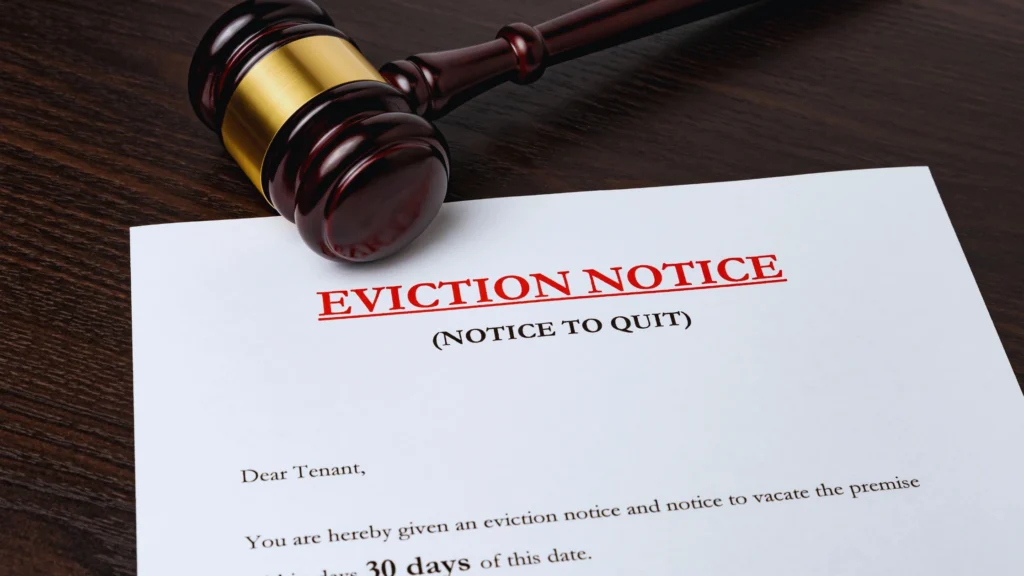If you’re tackling the South Dakota eviction process, you’ll need to grasp the state’s laws and procedures. From serving notices to involving the sheriff, each step demands precision.
This guide walks you through essential aspects like legal requirements, court proceedings, judgments, and potential costs.
Understanding the eviction process in South Dakota safeguards your rights as a landlord or tenant, leading to smoother resolutions in any eviction scenarios you face.
Eviction Notice and Lawsuit Filing
When facing a lease violation in South Dakota, you may receive a zero- to three-day South Dakota eviction notice from your landlord. South Dakota eviction laws outline the process for serving different types of three-day quit notices or immediate termination of the rental agreement due to violations.
To initiate the eviction process in South Dakota, landlords file a Verified Complaint for forcible entry and detainer, along with a Case Filing Statement and Summons. A $70 filing fee is required, and the lawsuit must be filed in the county where the property is located.
The Sheriff serves the Summons and Verified Complaint to the tenant, who then has four days to respond in writing. Failure to respond may result in a default judgment, moving the process towards a court hearing and potential eviction.
Serving Summons and Tenant Response
After serving the Summons and Verified Complaint to the tenant, the next step is for you to respond within four days in writing. This response should address the allegations made in the complaint.
If you fail to file a written Answer within the specified timeframe, the court may issue a default judgment against you. It’s crucial to carefully review the documents served to understand the claims being made against you and to prepare a timely and appropriate response.
Failure to respond can result in serious consequences, including an expedited eviction process. Be proactive in addressing the situation to protect your rights and present any defenses you may have.
Court Hearing and Judgment
Upon receiving the tenant’s written Answer within four days, you’ll proceed to schedule a hearing date to present your case in court for judgment on the eviction matter.
Make sure to gather all relevant documents like the lease agreement, eviction notice, complaint, and any evidence supporting your case. During the hearing, the judge will listen to both parties and may issue a judgment for the delivery of possession to you as well as any damages owed.
Following a favorable judgment, the court will issue an Execution for Possession, which typically results in the tenant’s removal within a few hours to days. Be prepared for this next step in the eviction process once the court has ruled in your favor.
Sheriff’s Involvement in Eviction
Proceed with the Sheriff’s involvement in the eviction process by requesting their assistance if the tenant fails to vacate the premises voluntarily.
Once the court issues a judgment for possession and the tenant still remains, the landlord can ask the Sheriff to physically remove the tenant from the property.
The Sheriff’s involvement includes forcibly evicting the tenant and overseeing the removal process. It’s important to note that there’s a fee of $95 for the Sheriff’s service in executing the eviction.
Special Cases and Costs
To address special cases and costs in the South Dakota eviction process, move forward with understanding the criteria for squatters’ rights and their removal, alongside the associated expenses.
Squatters in South Dakota can be evicted similarly to regular tenants, but specific conditions apply. The process involves meeting legal requirements for squatter eviction, typically necessitating the sheriff’s involvement.
Costs related to squatter eviction may include legal fees, court expenses, and potential property damages caused by the squatter. It’s crucial to comprehend the duration of the eviction process and adhere to the appropriate legal procedures and South Dakota laws to navigate these special cases efficiently.
Understanding the nuances of squatter rights and eviction protocols can streamline the process and help mitigate additional losses.
Conclusion
In conclusion, navigating the South Dakota eviction process can be complex, but with a clear understanding of the legal requirements and procedures involved, both landlords and tenants can effectively handle the situation.
By following the steps outlined in this article, you can ensure a smoother resolution to any eviction proceedings you may encounter and protect your rights throughout the process.
Stay informed, stay prepared, and approach the eviction process with confidence.
Also Read: 1z10f5370375758954: A Key to Better Data Management.

